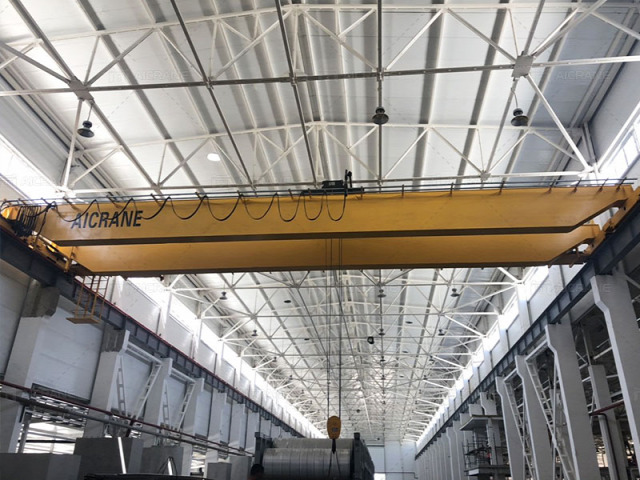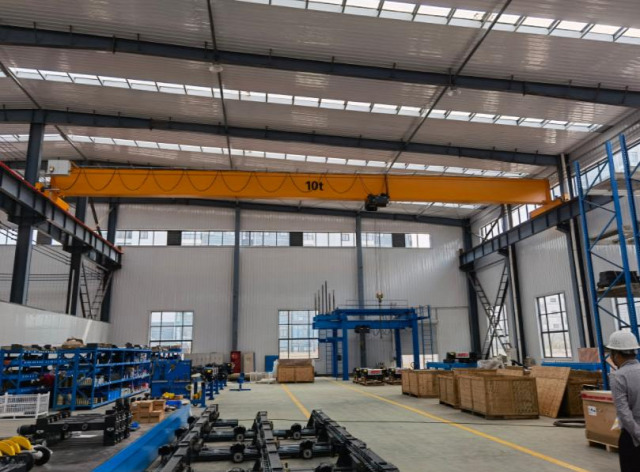In modern industrial facilities, optimizing space utilization is a crucial aspect of boosting operational efficiency and productivity. Overhead traveling cranes, widely used for material handling, play a vital role in this regard. These cranes offer unparalleled flexibility and reliability when it comes to lifting heavy loads, but their design and integration into a facility can significantly impact the space available for other operations. To maximize space efficiency while maintaining or improving crane performance, several key factors should be considered during the design phase. This article delves into how to optimize overhead traveling crane designs for space efficiency in industrial environments.

The Importance of Space Efficiency in Industrial Facilities
Space efficiency refers to the optimal use of available space to improve workflow, reduce congestion, and allow for safe and effective movement of materials. In industrial settings, space is often at a premium, and every square meter matters. Cranes, particularly overhead traveling cranes, are used to handle heavy materials and transport them across the facility. However, the design and layout of these cranes can take up a considerable amount of space, which may interfere with production processes, storage areas, or personnel movement.
Inadequate space for crane operation may also lead to safety hazards and reduce the crane’s ability to perform optimally. Therefore, achieving space efficiency while ensuring that the crane can handle its intended tasks safely and effectively is essential for creating an optimized industrial environment.
Key Considerations for Optimizing Overhead Traveling Crane Designs
Several factors contribute to designing overhead traveling cranes that enhance space efficiency. These include crane type, beam and track systems, load capacities, clearance height, and control mechanisms. Let’s explore each of these factors in detail:
1. Choosing the Right Crane Type
Overhead traveling cranes come in various configurations, including single girder, double girder, and underslung cranes. Each configuration has its advantages, depending on the specific application and available space in the facility.
Single Girder Cranes
These cranes feature a single overhead beam, making them ideal for applications where space is limited, and the required load capacity is not extremely high. Their design requires less space above and below the crane, offering better clearance for overhead equipment or storage. For industrial facilities with low headroom, a single girder crane is often a space-saving option.

Double Girder Cranes
These cranes are designed with two parallel beams and typically have higher load capacities than single girder cranes. While they take up more vertical space, they can be designed to optimize horizontal space. If the crane needs to lift extremely heavy loads, the double girder design offers greater lifting power without compromising structural integrity. Choosing the right girder configuration based on load requirements and available space is essential for space optimization.

Underslung Cranes
These cranes are mounted below the supporting structure, making them an excellent choice for facilities with minimal space above the crane. They can be an ideal solution for smaller industrial facilities where overhead clearance is restricted, and space needs to be maximized.
By choosing the right crane type, industrial facilities can optimize the use of available space without sacrificing crane performance.
2. Optimizing Beam and Track Layout
The layout of the crane’s beam and track system is crucial in optimizing space utilization. The crane tracks, also known as runway beams, should be installed in such a way that they make the most efficient use of the available space in the facility. Several factors need to be considered when designing the beam and track layout:
Track Clearance
The distance between the track and the overhead clearance of the facility plays a vital role in determining the available space for crane operations. Minimizing track height allows for more overhead clearance, freeing up valuable space below the crane.
Runway Placement
The placement of the crane runway should be done in such a way that it doesn’t interfere with the existing facility layout. It should align with the primary work areas where materials need to be lifted and moved. The layout should also allow for easy access to the crane for maintenance while leaving enough room for other equipment or vehicles to operate efficiently.
Track Design
Optimizing track design to minimize the footprint of the crane system helps in maximizing space efficiency. Curved or angled tracks might be necessary in certain areas to accommodate the layout of the facility, allowing the crane to access hard-to-reach locations without taking up additional space.
3. Adjusting Load Capacity to Match Facility Requirements
Overestimating the load capacity required for the crane can lead to the need for oversized cranes and structural support systems that take up more space than necessary. On the other hand, underestimating load requirements can result in a crane that is inadequate for the job, which could affect safety and performance.
To optimize space, it is essential to accurately assess the weight of materials that will be lifted and select a crane that matches the specific load capacity. For example, a 10-ton crane will require less space than a 50-ton crane, and it will also be less costly to install. This not only helps to save space but also reduces operating costs and ensures that the crane operates within its designed parameters.
4. Maximizing Headroom and Lifting Height
Headroom is a critical factor in overhead crane design, especially when the goal is to optimize space. The higher the lifting height of the crane, the more vertical clearance it requires above the crane track. However, it is possible to minimize headroom while still achieving the required lifting height by using specialized crane components such as low-headroom hoists.
Low-Headroom Hoists
These hoists are designed to maximize the lifting height within a limited vertical space. By reducing the hoist size, the overall height of the crane system is minimized, freeing up valuable vertical space.
Optimizing Lift Height
Careful consideration of the required lift height can also play a role in space efficiency. A crane that only needs to lift materials a few meters may not need as much vertical clearance as one that lifts to the full height of the facility.
5. Efficient Control Systems and Operation Modes
Control systems are integral to optimizing overhead crane operation. By adopting more efficient control systems and operation modes, cranes can reduce the amount of space needed for operation. Some of the most effective control systems for space optimization include:
Wireless Remote Control
Using wireless remote control allows operators to stand at a distance from the crane, enabling them to work in tighter spaces and avoid obstacles that could otherwise block the crane’s movement.
Radio Controls
These controls provide flexibility and precision, allowing for better space utilization when operating the crane in congested or confined spaces.
Automated Crane Systems
Automated cranes with sophisticated software controls can optimize crane movements, reduce unnecessary travel time, and make more efficient use of space in a facility. By minimizing human error and allowing the crane to operate autonomously, less space is required for maneuvering the crane during operations.
6. Safety and Maintenance Considerations
While optimizing space, it’s essential to consider safety and maintenance factors. Ensuring that adequate space is available for maintenance access and that safety clearances are met is vital for crane longevity and operational safety. This includes providing enough room around the crane for routine inspections, lubrication, and repairs without obstructing other operations or causing safety hazards.
Conclusion
Overhead traveling cranes are integral to material handling in industrial facilities, but their design and integration into a space can significantly impact overall space efficiency. By carefully considering the crane type, beam and track layout, load capacity, headroom requirements, and control systems, industrial facilities can optimize their overhead crane designs for maximum space utilization. Additionally, incorporating low-headroom hoists, wireless control systems, and automated crane technology can further enhance space efficiency without compromising safety or performance. In doing so, industrial operations can achieve the highest level of productivity while making the best use of the available space.

